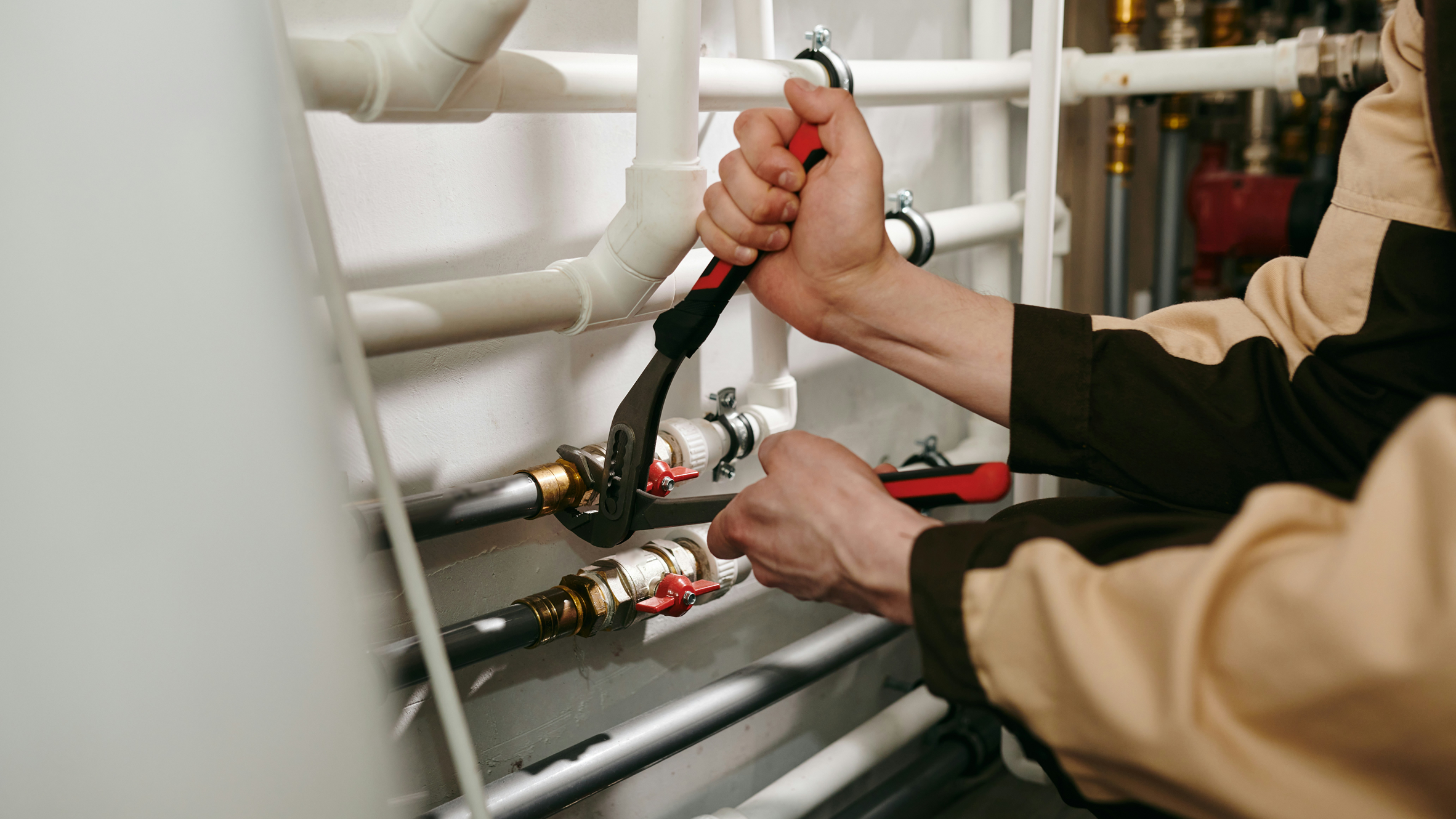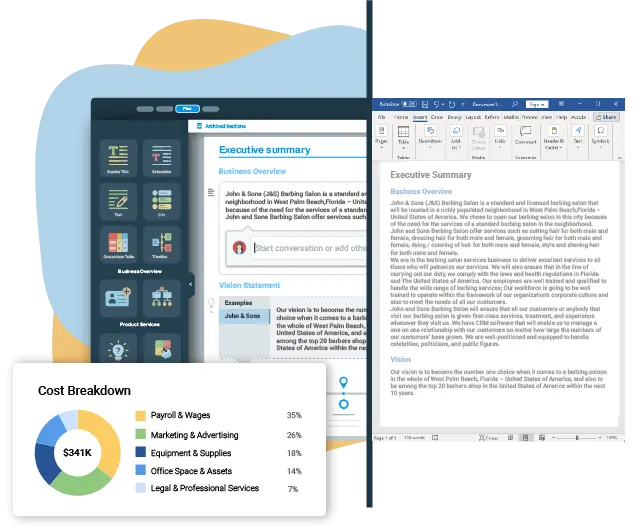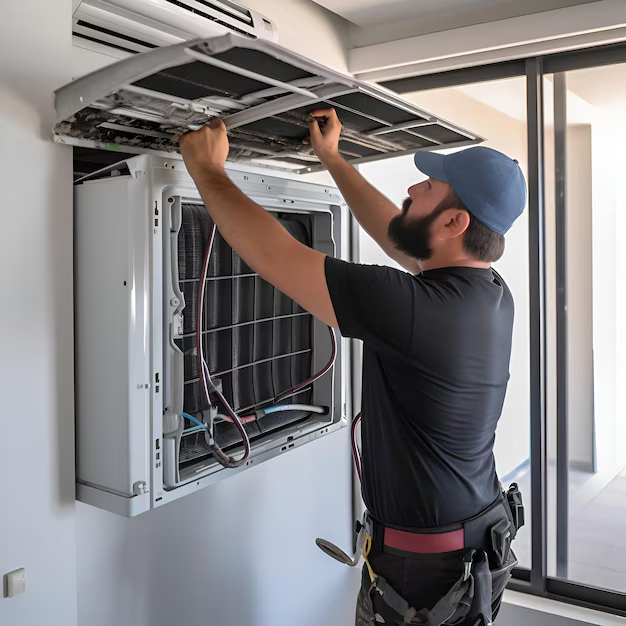Creating an HVAC Business Plan: Step-by-Step Guide


The HVAC industry in the USA is a major economic driver. According to SBE, HVAC companies generate $150 billion in annual revenue and employ over 1.5 million people nationwide. Moreover, nearly 90% of residential households have air conditioner equipment, driving a huge demand in the HVAC equipment market.
Building a successful HVAC business starts with a solid plan. Whether you’re just starting or looking to expand, having a clear, step-by-step plan can make all the difference.
In this guide, we’ll show you how to create a winning HVAC business plan that sets your business up for success. Let’s get started!
Why Do You Need an HVAC Business Plan?

An HVAC business plan is the backbone of any successful heating, ventilation, and air conditioning venture. It is a strategic tool that guides your decisions, keeps your business on track, and helps you achieve your goals.
Whether it's your company or you are a service provider, following a step-by-step HVAC business plan will take you a long way, and here’s why.
Foundation for Business Startup and Success
Your business plan lays the groundwork for your HVAC business. It defines your mission, target market, and the services you'll offer. By outlining these key elements, you ensure that your business starts strong for success. A clear plan helps you avoid costly mistakes and focus on growth from day one.
Organizational Tool to Track Growth and Ensure Profitability
An HVAC business plan isn't just for the beginning—it's your ongoing guide. Use it to track progress, measure success, and make adjustments as needed. It provides a structured way to monitor financial performance and ensure your business stays profitable. With this tool, you can keep everything organized, from budgets to employee roles.
Sets Clear, Achievable Goals and Expectations
A business plan helps you define your goals in a way that's actionable and realistic. Whether it's increasing customer retention or expanding to a new service area, having clear objectives keeps you motivated and focused. It also helps set expectations for your team, ensuring everyone aligns with your vision.
Also Read: Should you switch from IVR to AI voice assistants?
Now that we've discussed why an HVAC business plan is essential, it's time to explore its key components!
Step-by-Step Guide and Key Components of An Excellent HVAC Business Plan

An outstanding HVAC business plan covers all the critical elements needed for success. These components work together to provide the right direction for your business. They also ensure you're ready to meet challenges, seize opportunities, and achieve your goals. Let's explore each section in detail!
- Executive Summary
The executive summary is the first impression of your HVAC business plan. It provides a clear and concise overview of your business, its purpose, and its strengths. This section helps readers quickly understand who you are, what you aim to achieve, and why your business stands out in the industry. Here's what to include:
- Company History and Mission Statement
Highlight when and why it was started and what inspired you to enter the industry. Your mission statement should reflect your company's core values and purpose.
- Business Goals and Objectives
Outline your short-term and long-term goals. Be specific and actionable to show a clear path for growth.
- Competitive Advantages and Unique Value Proposition
Explain what sets your business apart from the competition. Highlight how your unique strengths solve customer problems better than anyone else.
- Market Analysis
Conducting a thorough market analysis is also important for your HVAC business plan. It helps you understand your target audience and identify market trends. Here’s how this insight enables you to tailor your services to meet customer needs effectively.
- Identification of Ideal Clients and Customer Segments
Analyzing demographics, behaviors, and needs can help you determine your ideal clients. Segmenting your market allows you to customize your marketing strategies and service offerings to attract and retain these specific groups.
- Local Market Size and Competition Analysis
Assess the size of your local HVAC market to understand the demand for services. Analyze your competitors to identify their strengths and weaknesses.
- Market Trends and Customer Needs
Stay informed about the latest market trends. Understanding evolving customer needs enables you to adapt your services accordingly, ensuring you meet expectations and capitalize on emerging opportunities.
To further enhance your customer service capabilities, consider integrating AI-powered solutions like Avoca. Avoca's platform can help you manage high call volumes and improve customer satisfaction. This ensures you never miss an opportunity to connect with your clients.

- HVAC Services Offered
Outline the services your business provides in your HVAC business plan. Clearly defining your offerings helps you attract the right customers and stay competitive, here’s how:
- Range of Services and Alignment with Market Demand
Describe the variety of services your business offers. Ensure these services address the specific needs of your target audience and reflect current market demand.
- Service Seasonality and Frequency Considerations
HVAC services often experience seasonal fluctuations, with peak demand during extreme weather conditions. Highlight how your business plans to manage these seasonal shifts, such as promoting preventive maintenance during off-peak times.
- Pricing Strategy in Alignment with Market Expectations
Establish a pricing strategy that reflects the value of your services while remaining competitive in the market. Research local competitors to determine standard pricing and packages to meet diverse customer needs.
- Implementation and Business Strategy
The implementation and business strategy section of your HVAC business plan outlines how you will implement your goals. It focuses on the marketing, sales, and operational strategies that will drive your business forward. This ensures alignment with your financial goals and market opportunities.
- Marketing Strategies and Effective Channels
Identify the marketing strategies that will best reach your target audience. Utilize effective channels like social media ads, email campaigns, local SEO, and partnerships. Highlight your unique value propositions in your campaigns, such as energy-efficient solutions or 24/7 emergency services.
- Sales Forecasts and Operational Coordination
Provide clear sales forecasts based on market analysis and past trends, if applicable. Include projections for service contracts, seasonal work, and new installations. Operational efficiency ensures that you meet customer demand and maintain high service quality.
- HVAC Pricing Considerations, Including Overhead Costs
Establish an HVAC pricing strategy that balances competitiveness with profitability. Pricing should reflect the value of your services while being clear and transparent to customers.
Does that sound overwhelming? Do not worry! For seamless coordination and enhanced customer service, consider integrating the AI-powered solution Avoca AI into your business.
- Management and Operations Plan
The management and operations plan outlines how your HVAC business will function on a daily basis. It ensures that operations run smoothly, employees are well-managed, and budgets are effectively maintained.
- Day-to-Day Operational Aspects and Logistics Management
Detail the daily processes that keep your HVAC business running, such as scheduling appointments, dispatching technicians, managing inventory, and handling customer inquiries. Efficient logistics management ensures timely service delivery, optimal routing for technicians, and minimal downtime.
- Employee Management, Training, and Staffing Needs
Focus on building a strong team by identifying staffing requirements and roles, such as technicians, dispatch coordinators, and customer service representatives. Implement regular training to keep employees updated on industry standards and new technologies. Effective management ensures your staff is motivated, skilled, and aligned with your business goals.
- Budgeting and Cost Management for Labor and Operations
Establish a clear budget for labor, equipment maintenance, and operational expenses. Monitor these costs regularly to avoid overspending while maintaining high service standards. Cost-effective strategies, such as preventive maintenance for equipment and efficient scheduling, can help keep expenses under control.
Also Read: AI in HVAC Call Centers: Benefits, Applications, and Future Trends
- Financial Plan and Projections
A solid financial plan and projections section is crucial to demonstrate the financial viability of your HVAC business. This section highlights your startup costs, profitability, and funding requirements. Plus, it also ensures transparency for stakeholders and guides your financial decisions.
- Financial Projections Including Startup Costs and Profitability
Outline your HVAC startup costs, including equipment, marketing, and staffing needs. Provide detailed financial projections for revenue and expenses over the first 3-5 years. Show how your business will achieve profitability within a realistic timeframe, supported by accurate calculations and market analysis.
- Balance Sheet, Sales Forecast, and Cash Flow Analysis
Include a balance sheet to summarize your assets, liabilities, and equity. A detailed sales forecast helps predict revenue based on market demand and service offerings. Cash flow analysis ensures that your business can cover day-to-day expenses and navigate seasonal fluctuations in demand.
- Break-Even Analysis and Funding Needs
Conduct a break-even analysis to determine the point at which your revenue will cover all expenses, signaling the business’s financial stability. If applicable, highlight your funding needs and explain how you plan to use the funds to meet operational requirements. This can include securing loans, seeking investors, or reinvesting profits.
With every section of your HVAC business plan carefully outlined, you have a clear guide for moving your business toward success. From market analysis to financial projections, each piece comes together to create a strong foundation for growth.
As we wrap up, let’s summarize the key takeaways and leave you with some final tips to keep your business on track!
Conclusion
Creating an HVAC business plan is just the beginning. Regular updates and revisions are essential to maintaining its effectiveness. As your business grows and the market changes, revisiting your plan ensures it stays relevant and aligned with your goals. This ongoing process allows you to adapt to new challenges, seize opportunities, and refine your strategies.
Moreover, adapting to evolving market conditions is equally important. Embrace the changes in customer needs, technology, and industry trends. Staying flexible helps you remain competitive and make changes according to the requirements. By proactively adjusting your approach, you can continue delivering exceptional service and achieving sustainable growth.
Are you looking for tools to streamline your operations and enhance customer satisfaction? Avoca can help! Optimize your HVAC business with advanced solutions designed to improve efficiency and communication. Book a demo with Avoca AI today and take your business to the next level!



